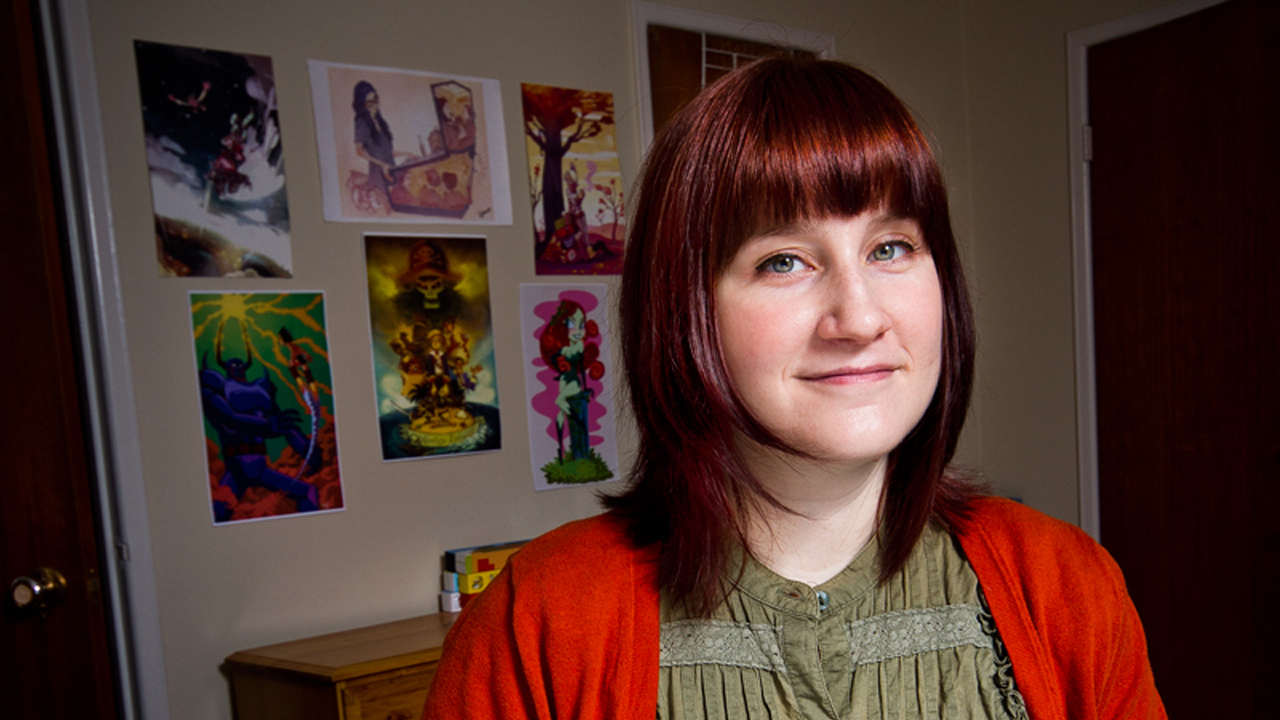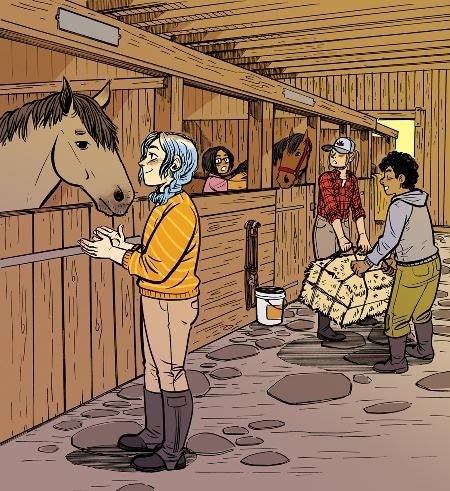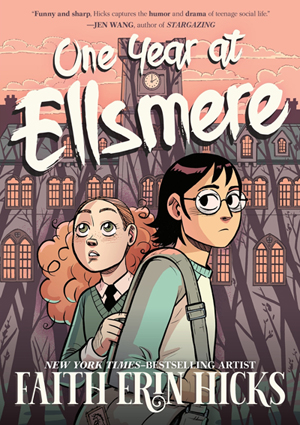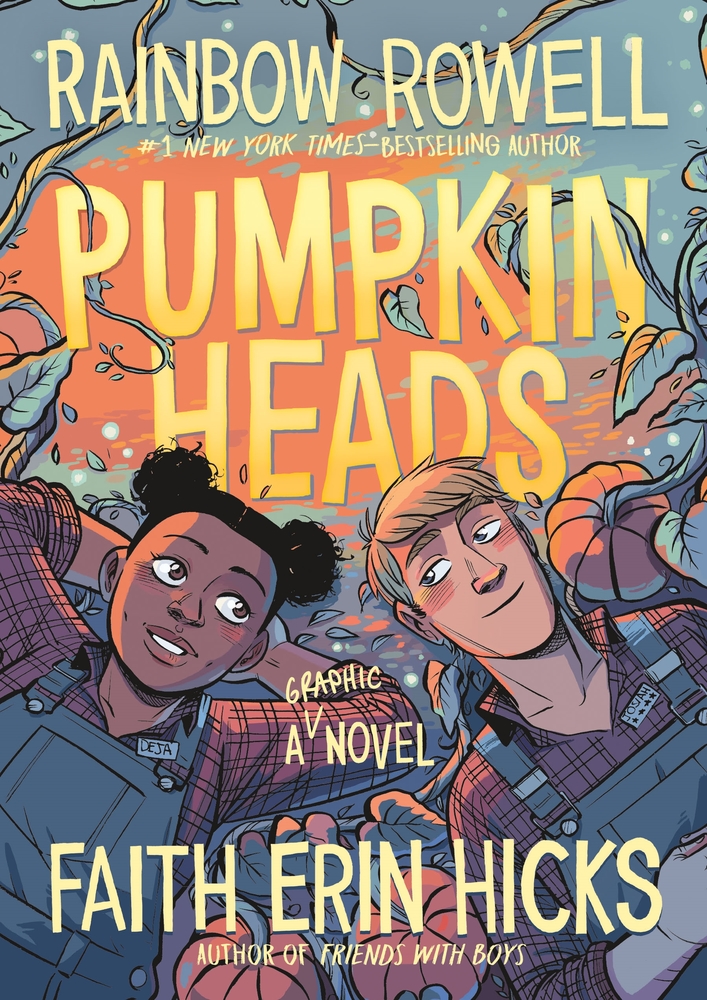The secret origin of Faith Erin Hicks, creator of The Nameless City and more
From reading Tintin to creating The Nameless City, Friends with Boys, and more

Faith Erin Hicks is one of the most in-demand writer/artists in graphic novels, built on the success of her Avatar: The Last Airbender comics and numerous creator-owned comics. With such a successful (and prolific) career, it's easy to forget her humble beginnings in the late '90s webcomics scene.

Hicks' next graphic novel Run On is inspired by her own childhood as a self-professed 'horse girl,' but she was also a comics girl - Tintin to be exact.
As part of Newsarama's spotlight interview series 'The secret origin of...', we spoke with Faith Erin Hicks to learn about her early days as as a comics creator and a comics fan, and how that interest blossomed and was forged into a career in the comic book industry.
Newsarama: Faith, what was the spark that made you interested in the comic book medium as a fan?
Faith Erin Hicks: I honestly don't know! I remember always being very drawn to comics, that there was something about the visual element of the medium that really attracted me, but I'm not sure if there was ever a particular single spark. Like many Canadian children, I loved reading comics like Tintin and Asterix when I was little.
Nrama: Do you remember the first comic book you read?
Hicks: It was probably a Tintin comic, or maybe a bible comic I had as a kid. I'm pretty knowledgeable about bible history, mostly because I read that bible comic until it fell apart.
Get the best comic news, insights, opinions, analysis and more!
Nrama: How did you know you wanted to work in comics?
Hicks: I started drawing webcomics back in the dark ages of the internet, 1999. It was very much a hobby back then, I never considered it something I could build into a career. But doing those early first webcomics was how I fell in love with making comics, so I consider them the start of my career.

Nrama: That webcomic was Demonology. What was the webcomic landscape like back then?
Hicks: It was much smaller, kinda miniscule, actually. Monetizing your webcomic or making a living from it was not really a thing, and (based on my memory) I feel like most of the people doing comics were people like me: kids in school. I also got the impression that doing webcomics was considered strictly for amateurs: if you were a professional cartoonist, why weren't you getting published by a 'real' publisher, that kind of thing.
Nrama: How do you feel like the webcomic landscape has changed?

Hicks: It's so different now! Now cartoonists literally have webcomic empires, with readerships that are beyond my wildest imagination. It's really exciting, I'm glad people have figured out a way to make it work and make a decent living from webcomics.
Nrama: And how do you feel like your art style has changed over the years?
Hicks: I don't know that my style has necessarily changed, but my fundamental art skills have grown considerably. Looking back at old artwork it still looks like I drew it, but now I actually have skills in anatomy and perspective, so my drawings look a million times better. Or, at least I hope they do.
Nrama: You've also done plenty of graphic novels. What do you enjoy about this format compared to single issues or even webcomics?
Hicks: I'm definitely a graphic novel person. I like reading them, I like making them. I like the satisfaction of a complete story.

Drawing them is hard; drawing a graphic novel is like running a marathon, just trudging away, putting one foot in front of the other, churning out page after page until the thing is done. It can be very grueling. But it's how I like to work. I like being able to see the whole book in front of me, and edit it into the best form it can be.
Nrama: Is the creative process different working in webcomics compared to graphic novels?
Hicks: I haven't made a regular webcomic in over a decade, but when I made webcomics, I worked from a loose storyline and wrote the script as I drew the pages. It was very haphazard and made for story conflicts down the road.
When I draw a graphic novel, the script and story are nailed down before I start drawing the pages, so I have a very clear idea of where everything is going to go. I think it makes for a much more cohesive final product.
If I ever went back to webcomics, I'd definitely nail down my script ahead of time.
Nrama: You've also worked on the Avatar: The Last Airbender franchise and Buffy the Vampire Slayer. What do you enjoy about work for hire projects like this?

Hicks: Playing in someone else's sandbox, using characters and jumping off from stories someone else has created can be a lot of fun. The hard work (creating the world, the characters, the antagonists and main conflicts) has been done, and I get to dive in and do what I want (within reason). I don't have a ton of original ideas, so in order to keep creating on a regular basis, I like to do licensed work.
Nrama: What made you want to work on Avatar: The Last Airbender in particular?
Hicks: Because it's my favorite animated show of all time! C'mon, it's amazing, who wouldn't want to work on it? ;)
Nrama: I know they're all your babies, but do you have a favorite story you've worked on?
Hicks: Hm, Friends with Boys, The Adventures of Superhero Girl, and The Nameless City trilogy are the comics I'm the most proud of, so those five, I guess! ;)
Most of Hicks' comics are available digitally, as she originally debuted in comics. Check out the best digital comics readers for Android and iOS devices.
Kat has been working in the comic book industry as a critic for over a decade with her YouTube channel, Comic Uno. She’s been writing for Newsarama since 2017 and also currently writes for DC Comics’ DC Universe - bylines include IGN, Fandom, and TV Guide. She writes her own comics with her titles Like Father, Like Daughter and They Call Her…The Dancer. Calamia has a Bachelor’s degree in Communications and minor in Journalism through Marymount Manhattan and a MFA in Writing and Producing Television from LIU Brooklyn.



